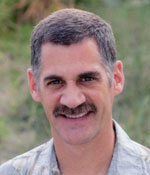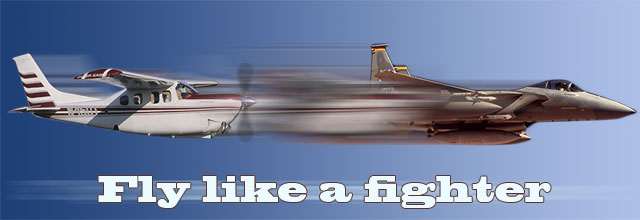The majority of my instructor time in the F-15 was solo. We learned how to monitor our wingman and provide instruction from our own cockpit, whether it was dogfighting, air-to-air refueling, or flying an instrument approach. When I became a T-38 instructor we sometimes had a solo student in formation with us, so I was used to monitoring and instructing them from my own airplane. The added complexity was that we normally also had a student flying in our own airplane. This meant that you potentially had two students trying to kill you at the same time.
 On one of these types of sorties, we got to the extended trail exercise where the solo student was to stay in a cone aft of our tail. A knock-it-off was required if the student flew forward of our wing line, and he or she was never to fly in front of us. The student in my jet started flying some lazy 8 maneuvers to set up for a barrel roll. The barrel roll is basically a corkscrew flown horizontally through the sky and can be tricky to follow if the wingman gets too far inside the turn. My solo student was on the edge of being too far inside the turn.
On one of these types of sorties, we got to the extended trail exercise where the solo student was to stay in a cone aft of our tail. A knock-it-off was required if the student flew forward of our wing line, and he or she was never to fly in front of us. The student in my jet started flying some lazy 8 maneuvers to set up for a barrel roll. The barrel roll is basically a corkscrew flown horizontally through the sky and can be tricky to follow if the wingman gets too far inside the turn. My solo student was on the edge of being too far inside the turn.
As we began our pull up and then started a rolling pull into the wingman, the solo wingman needed to fly toward our tail to stay behind us. This didn’t happen. We had passed through about 120 degrees of bank when the solo student flew past us and wound up in front. Because it wasn’t really a dangerous situation, I let the scenario play out for a moment to see how the two students would handle things. Neither student made a knock-it-off call. In the next moment, the solo student started a pull back into us in a late attempt to try and get behind us. That became a dangerous situation. I took the controls and directed the wingman to roll out while I maneuvered away from him to regain separation.
During the debrief, the solo student was still in the “happy I just flew solo” mode. When it came time to grade all of the maneuvers and the overall flight, I gave the solo student an unsatisfactory mark overall for safety of flight. The student was shocked and yelled out, “You can’t bust me, I was solo!” Yes I could, and yes I did.
Including my time in follow-on schools, it was almost two years from the time I started Air Force pilot training before I flew a sortie without a grade sheet. Even after that, there was always a debrief to review my performance. It wasn’t always fun to hear about my mistakes, but that was a necessary process to make me a better pilot.
Most general aviation flying includes neither a grade sheet nor a debrief. Flying with an attitude of “You can’t bust me” may be true since we aren’t being graded. But if we are all to become better pilots, we owe it to ourselves to evaluate our performance on every sortie. When solo or with nonpilot passengers, take the time to critique yourself. With another pilot, don’t be afraid to ask for feedback. To make it meaningful, be specific. Include the good and the not so good. Everything is fair game, from preflight planning through locking the hangar after your flight. If you consistently do this after each flight, you will find yourself evaluating your performance more during the flight and fixing mistakes before they happen. This is just one way to get better, no matter how good you are already.
Larry Brown of Colorado Springs, Colo., is a retired Air Force F-15 pilot who is using the lessons he learned as a fighter pilot as a GA pilot in his Cessna P210. Brown, who has 2,700 hours total time during his 33 years of flying, also was an instructor pilot and flight examiner in the Air Force T-38 and instructor pilot in the T-52, the military’s version of GA’s Diamond DA40. See previous installments of “Fly like a fighter.”




